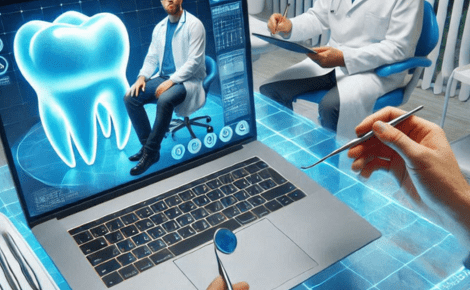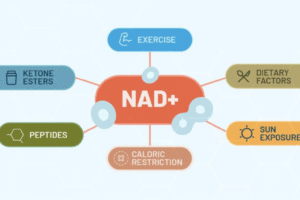With the growing popularity of the teledentistry industry, dental services are becoming more accessible to different patients and more effective in general. Like many other aspects of healthcare, teledentistry is a component of telehealth that uses technology to offer dental services remotely. This change is not just a short-term reaction to threats such as pandemic illnesses but a shift toward enhancing access in the dental field in the long run.
Teledentistry is vital when people can hardly access dental care because of location, cost, or social barriers. When dentists start examining people remotely, they can get the best results and check more people easily. Consumers prefer such digital solutions because they simplify their lives and enable them to get a response from healthcare professionals faster. Thus, through video calls or other means, patients can have check-ups and receive advice, and a family dentist in Glen Ellyn, IL, can continue treatment, pointing at some conditions. This is easy and convenient as flexibility allows everyone to embrace dental care as important.
Future of Digital Dentistry
The prospects of dental practice with digital technologies predict even more comfort, precision, and simplicity. Think about booking a dentist appointment as simply as using the app on your mobile device. This will not happen in the future; in fact, it is slowly coming to the realization stage.
Advances in technology will also improve treatment as the dentist will get more time to spend with the patient, and visits will not have to be scary for the patients. Virtual consultations enable patients to have an appointment with their dentist, receive a first evaluation or a second opinion, and even make subsequent appointments through video calls.
Dentists will also incorporate new technologies such as three-dimensional printing and imaging to help improve the treatment finesse of procedures offered to patients. There is no doubt that records in digital format will provide dentists with complete information about the patient at one glance and make the treatment furthermore comprehensive and systematic.
How Technology is Changing Dentistry
Technology has enhanced every aspect of dentists’ operations and service delivery, from appointment-taking to treatment within the dental chair. Through the adoption of advanced software, it becomes easy for dentists to plan their treatments well, explain to the patient the consequent outcome after the treatment, and adjust the same depending on the inputs that they are given.
Artificial intelligence (AI) helps dentists. It finds problems in X-rays and spots things like cavities and gum disease. Intraoral cameras are mainly used to highlight the inner part of the mouth, which patients can see, too. This makes them feel included. Tools like drills are quieter now, which helps patients feel more comfortable.
Benefits of Digital Dentistry
Digital dentistry is helpful. It brings care to people far away. Virtual visits save time and money, and people can get help from home.
Digital tools make work easier. Dentists can keep records and plan better. Treatments can fit each patient. 3D models show what will happen. This makes patients less scared.
Virtual Reality in Dentistry
Virtual reality (VR) is cool. It shows patients what to expect and distracts them during treatments. Dental students use VR to learn safely, and doctors plan better with 3D models.
AI for Scheduling
AI makes booking easy, stops double bookings, fills empty slots, and reminds patients about visits, keeping clinics running well.
Conclusion
Virtual visits are handy, but some care requires in-person visits. The future will use both. Technology makes dental care simple and better for everyone. However, it is up to you to determine what works best for you. Remember to prioritize your oral health!















